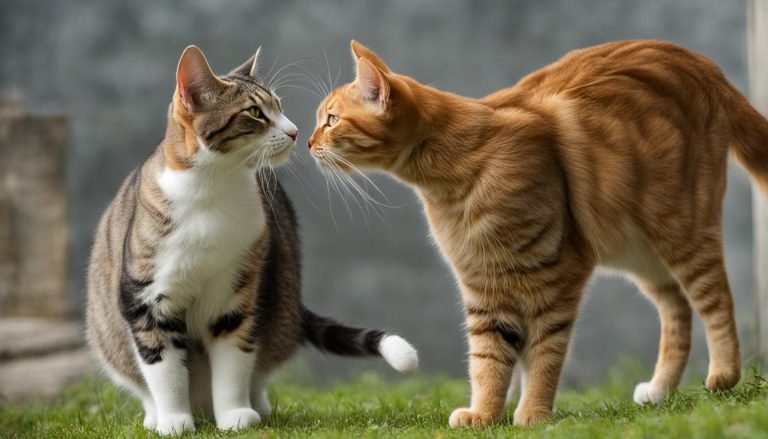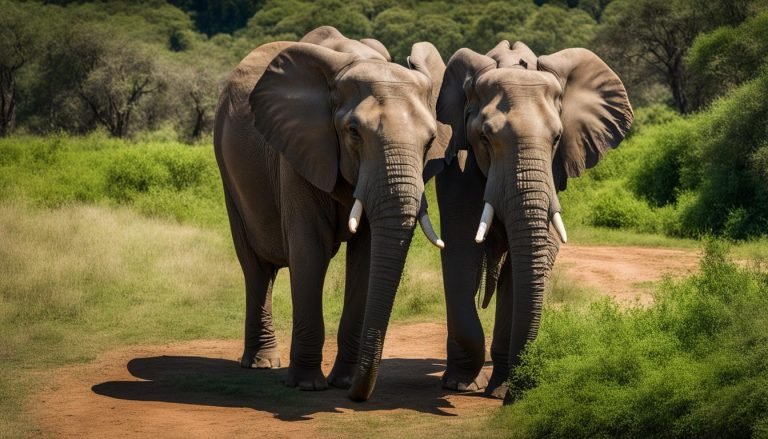How Do Rabbits Mate? – Explained
Rabbits are fascinating creatures, and their mating process is no exception. Understanding the complexities of rabbit reproduction, including their behavior and reproductive cycle, is essential for anyone interested in breeding these adorable animals.
In this section, we will delve into the world of rabbit mating behavior, reproduction, and breeding techniques. We will explore the courtship rituals, territorial displays, and communication methods that rabbits use to attract a mate.
We will also discuss the different stages of the rabbit reproductive cycle and the factors that influence it. Finally, we will provide insight into breeding techniques and considerations that must be taken into account before breeding rabbits.
Key Takeaways
- Rabbits have specific mating behaviors that are essential to their reproductive process.
- The reproductive cycle of rabbits is influenced by various factors, such as breed and environment.
- Breeding rabbits requires careful consideration of various factors, including health, age, and genetics.
- The timing and duration of the rabbit mating season are influenced by factors such as daylight hours and temperature.
- Effective strategies for ensuring successful breeding and maintaining optimal health in rabbits during the reproductive period are crucial.
Rabbit Quiz
How well do you know rabbits? Test your knowledge here!

Understanding Rabbit Mating Behavior

Rabbits have unique mating behaviors that are essential to their reproductive process. Understanding these behaviors can help you optimize your breeding practices and ensure successful reproduction. Let’s explore some of the most important rabbit mating behaviors and how they impact breeding habits.
The Importance of Courtship Rituals
Rabbits have intricate courtship rituals that play a vital role in attracting mates. These rituals involve behaviors such as circling, sniffing, and nuzzling. Through these actions, rabbits communicate their readiness to mate and signal their attraction to potential partners. By observing these courtship behaviors, you can gain insight into the reproductive preferences of your rabbits and optimize breeding pairs.
Establishing Territories and Communicating Interest
Rabbits also establish territories and communicate their interest in breeding through various behaviors. For example, males may display territorial aggression by thumping their back legs or growling at other rabbits. Females, on the other hand, may “present” themselves to males by lying down and exposing their belly. By understanding these behaviors, you can create optimal breeding conditions for your rabbits, ensuring successful reproduction.
| Rabbit Mating Behaviors | Description |
|---|---|
| Circling | Rabbits will circle each other, indicating interest in mating. |
| Nuzzling | Rabbits will nuzzle each other to show affection and attraction. |
| Thumping | Male rabbits will thump their back legs to establish territory and communicate aggression. |
| Presenting | Female rabbits will present their bellies to males to indicate receptiveness to breeding. |
Rabbit Breeding Habits
In addition to courtship rituals and communication behaviors, rabbits also have specific breeding habits that impact successful reproduction. For example, rabbits prefer to breed in a comfortable and familiar environment, such as their hutch. Additionally, rabbits are more likely to breed successfully if they are healthy, well-fed, and free from stress.
By understanding the breeding habits of rabbits, you can optimize your breeding practices and ensure successful reproduction. It’s important to create a comfortable and stress-free environment for your rabbits and provide them with optimal nutrition and care.
The Rabbit Reproductive Cycle

Rabbits are known for their rapid reproductive cycle, with females capable of producing several litters a year. The reproductive cycle of rabbits is influenced by various factors, such as their breed, age, and environmental conditions.
The rabbit reproductive cycle consists of four stages:
- Mating: The mating process typically occurs in the early morning or evening, and it’s essential for successful reproduction. During mating, the male rabbit mounts the female and inserts his penis into her vagina. The act usually lasts for a few seconds, but it can take up to 15 minutes.
- Gestation: After mating, the female rabbit goes through a gestation period that typically lasts between 28 to 31 days. During this time, the fertilized eggs develop into embryos in the uterus.
- Birthing: Once the gestation period ends, the mother rabbit gives birth to a litter of kits, which can range from 1 to 14 depending on the breed and litter size. The birthing process, or kindling, can last up to several hours.
- Nursing: The mother rabbit nurses her kits for approximately 4 to 6 weeks until they are weaned and can eat solid food.
The reproductive cycle differs for male rabbits, as they do not carry and birth offspring. Instead, male rabbits can mate year-round and produce viable sperm throughout their lifespan.
“Understanding the reproductive cycle of rabbits is essential for successful breeding. By monitoring the different stages of the cycle, breeders can ensure healthy offspring and manage the reproductive process effectively.”
How Do Rabbits Mate: Techniques and Considerations
Breeding rabbits can be a rewarding experience, but it’s essential to consider certain factors before starting. Proper knowledge and techniques are crucial to ensure successful reproduction and maximize the health of the breeding rabbits.
Factors to Consider Before Breeding Rabbits
Before breeding rabbits, several factors need to be considered to ensure the health of both the parent rabbits and the offspring.
- Age: Rabbits are ready for breeding at about six months of age, but it’s best to wait until they are fully matured, which is around eight months.
- Health: The rabbits must be in excellent health and free from any underlying medical conditions. They should be up to date on vaccinations and treated for parasites.
- Genetics: Knowing the genetic history of the rabbits is critical to avoid breeding rabbits with genetic defects.
- Temperament: The temperament of the rabbits should be taken into account, and they should be compatible with each other.
Neglecting any of these factors can lead to significant problems during pregnancy, birth, or with the offspring’s health. Always consult a veterinarian before breeding rabbits.
Breeding Techniques for Rabbits

There are two primary techniques for breeding rabbits, natural mating, and artificial insemination.
| Technique | Description |
|---|---|
| Natural Mating | Rabbits mate naturally, and this method is the most common technique for breeding. Two healthy rabbits are placed together and monitored for successful mating. |
| Artificial Insemination | Artificial insemination is the process of introducing semen from a male rabbit into a female rabbit’s reproductive tract using a syringe. This method is useful for breeding rabbits that are incompatible or for selective breeding. |
Both methods have advantages and disadvantages, and the right method depends on the specific breeding goals. Always consult with a veterinarian or experienced rabbit breeder before attempting either method.
“Breeding rabbits requires careful consideration and knowledge of proper techniques.”
Breeding rabbits can be a fantastic experience that allows you to raise litters of adorable bunnies and improve rabbit breeds. However, it’s essential to take appropriate precautions and techniques to ensure the health and well-being of the parent and offspring rabbits. Consider the factors listed above and consult with a veterinarian or experienced breeder to determine the best breeding approach for your specific goals.
The Rabbit Mating Season and Reproduction Management
Rabbits have a unique reproductive cycle and specific mating seasons influenced by a variety of factors. Understanding these cycles is essential to successful breeding and maintaining optimal health in rabbits.
The Rabbit Mating Season
The rabbit mating season is influenced by environmental factors such as daylight hours and temperature. Generally, the mating season begins in late winter and lasts through early fall. Depending on the breed and environmental conditions, rabbits may mate year-round or have multiple breeding seasons.
Rabbit Courtship Rituals
During the mating season, rabbits engage in a series of courtship rituals to attract mates. These rituals include vocalizations, territorial displays, and physical contact. Male rabbits may also spray urine or mark their territory to assert dominance. Female rabbits may become aggressive towards male rabbits if they do not want to mate.
Reproduction Management
Managing rabbit reproduction requires careful consideration of various factors such as age, genetics, and overall health. It is important to ensure that rabbits are in optimal health before breeding and to select appropriate breeding partners. It is also essential to provide rabbits with a stress-free environment to maintain their reproductive health.
During the breeding season, it is important to monitor rabbits closely for any signs of illness or disease. Rabbits may also require additional nutrition and care during the gestation and nursing phases. By carefully managing reproduction and providing optimal care, rabbits can successfully mate and produce healthy offspring.







